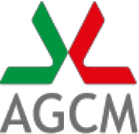DYNAMICS OF PASSENGER TARIFFS IN THE PASSENGER AIRLINE SECTOR
PRESS RELEASE
PRESS RELEASE
ANTITRUST WHITE PAPER ON THE DYNAMICS OF PASSENGER TARIFFS IN THE PASSENGER AIRLINE SECTOR
NEW OPERATORS ARE STILL FACED WITH MARKET ENTRY BARRIERS. TRADITIONAL FULL SERVICE COMPANIES REVIEW STRUCTURE OF COSTS.
FINAL CONSUMER TARIFFS ARE STILL TOO BLURRED.
The Italian Competition Authority has been conducting a fact-finding investigation on the dynamics of tariffs since December 2003 and the results have revealed that deregulation has not been fully completed in the passenger airline sector yet. In reality, many routes are still subject to market entry barriers that have prevented changes in competition.
Diversely, consumers have benefited from increased supply and lower costs wherever competition has opened up, even in a negative period when the traditional full service airline industry has been hit by great profit losses and challenged by low-cost carriers.
The investigation reports that market entry of low-cost carriers has resulted in extremely low tariffs that have met the requirements of an ever expanding demand and made people view the same concept of airline transport as a commodity.
Low-cost carriers do not directly replace full service carriers, nonetheless the customer target market of both services is progressively overlapping as the area of price sensitive users is expanding and the same full service carriers offer promotional tariffs impacting on tariff structure.
The authority feels that today full service carriers find it hard to justify the differences in fares and to adopt a differential pricing strategy based on reservation classes, this being the classic way to maximise profits. The lack of clear reference indicators results in full service carriers aligning their fares with the competition and this exposes the former to substantial losses. Therefore, drastic cost restructuring is the only way to enable full service companies to offer their own services for fares that are in line with the times and consumers’ willingness to pay for them, and are also remunerative for the companies.
The current scenario highlights two main issues:
a) identification and removal of barriers preventing full competition from opening up;
b) recovering full service carriers’ efficiency in order to support more aggressive tariff policies.
From this angle the Authority judges the companies’ initiatives aimed at improving service production conditions positively, and at the same time plans to oppose the widespread use of barriers in the sector.
It is important to examine the operations of concentration and different practices of cooperation between carriers (alliances and code sharing): the investigation advises establishing whether these agreements restrict competition, or whether they provide consumers with advantages offsetting any restrictions in competition.
Furthermore, the Authority feels that competition should be developed urgently in the markets flanking the airline sector, i.e. airport services management, in order to improve carriers’ recovery and efficiency.
With special reference to tariffs, in other words, the main drivers of competition, the Authority intends to tackle the “blurred” consumer fares that are the air fare (that is widely advertised) plus various supplements that are not advertised clearly enough.
In this scenario, the difficulties encountered by full service carriers conducting interventions on delicate production factors, such as staff and fleet, should not be viewed as an excuse to delay the restructuring of the sector. Otherwise, the framework of competition of the national airline sector may be jeopardised by poor organisation and inefficiency and thus may not be able to adjust to demand, and these costs would be passed on to consumers.
The full text of the white paper together with attachments and tables can be downloaded from the Authority’s website www.acgm.it
Rome, 7 May 2005

